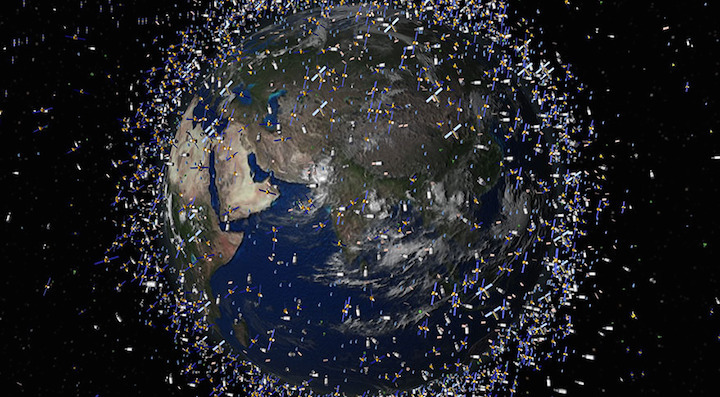26.10.2017

BREMEN, Germany — Managing space traffic in a systematic way is becoming increasingly important as small-satellite megaconstellations in development promise to add to the problem.
If Europe wants to take a lead role in this necessarily global endeavor, it needs to step up its game, Rolf Densing, head of the European Space Agency’s European Space Operations Centre (ESOC) said Oct. 25 at Space Tech Expo Europe here.
Densing said the current European approach under the Space Surveillance and Tracking initiative managed by the European Union is too fragmented to provide the level of detail required to monitor and manage the increasingly cluttered orbital environment.
“Individual European states have their assets, they have their radars, which very often are under military governance,” said Densing. “They are perfectly fine for observing satellites but when it comes down to smaller pieces, down to 10-centimeter pieces, this needs an investment in the order of billions and this is something that would typically be done on the European level.”
ESA, with its Space Situational Awareness program, operates a small radar and keeps an eye on space weather and near Earth objects — namely, asteroids. ESA’s SSA capabilities, however, aren’t optimal for tracking small space debris and the agency can’t solve the problem on its own, according to Densing.
“What we need is an investment in the order of one or two billion” euros, said Densing. “We need a joint strategic approach to a joint European infrastructure. If we all build our own national assets, the radars in the order of a couple of meters, we are not getting to where we need to get.”
The U.S. Air Force is the world leader in SSA capabilities and provides collision warnings to satellite operators around the globe. But the Air Force is looking for ways to hand off to civilians its role as the world’s de facto space traffic cop .
Densing said that the creation of global space traffic regulation is becoming critical but for Europe to have a voice in the future negotiations, it needs to have something to bring to the table. And that something, Densing said, can only be achieved if the relatively small EU and ESA member states join forces and work together in the same manner they do on the development of the European Ariane launcher or the Galileo navigational constellation.
“If you as Europe want to be competitive on a global scale, it is a good idea to get organized on the European level,” Densing said. “This is the only way how to get our industry involved in challenging projects, not a single national industry would be able to do it on their own.”
Densing was one of the speakers on a space traffic management panel that also touched on how the capabilities of Europe’s navigational system Galileo could be utilized for space traffic management purposes. The panelists said an integrated system needs to be created that would consider unmanned aerial vehicles as well as the emerging high-altitude platforms, while working to the same standard as modern air traffic management. The two, the panelists said, need to be closely integrated to avoid risks to aircraft from suborbital vehicles and satellite carrying rockets.
Quelle: SN
